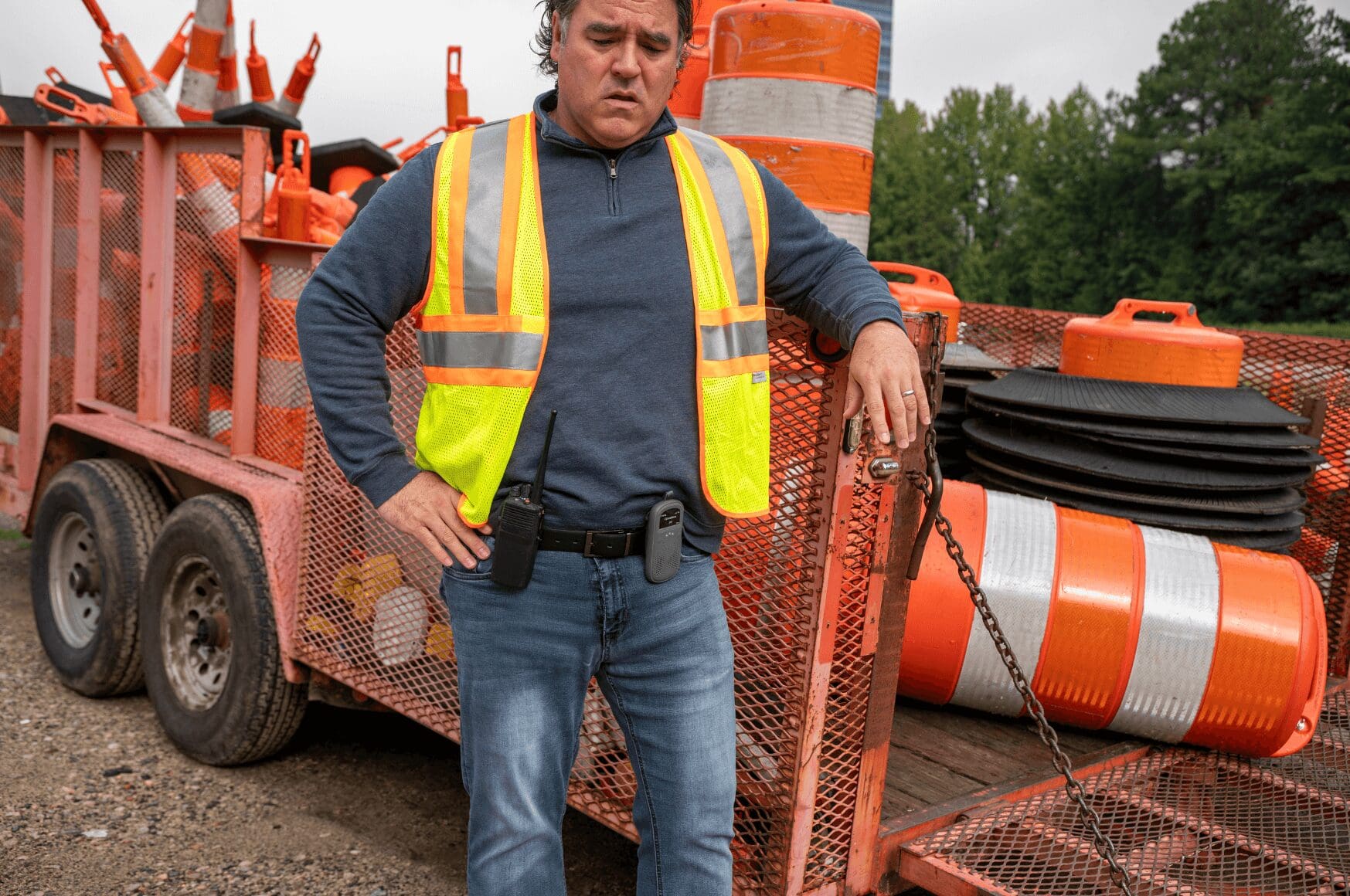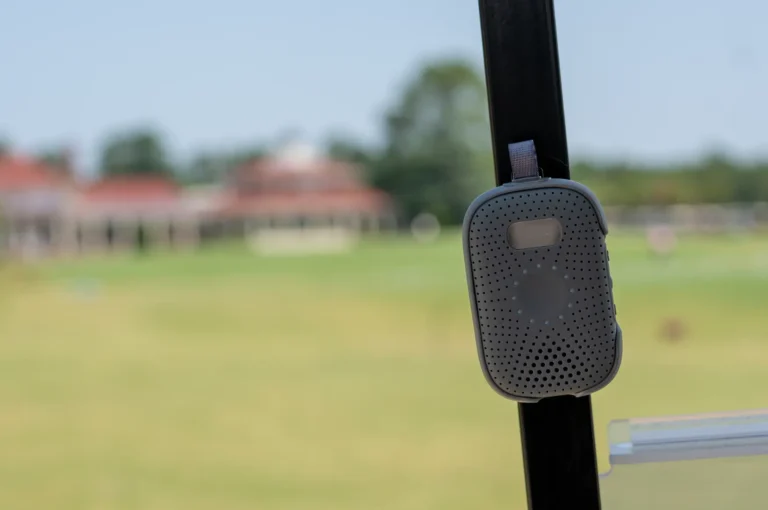Despite being invented in the 1930s (almost a hundred years ago), walkie-talkies are still one of the most frequently used communication devices in business today.
Workplaces across the globe rely on walkie-talkies to communicate with staff and keep a business running smoothly – from large entertainment venues and casinos to hotel chains and warehouses.
Yet investing in a walkie-talkie for your business requires careful planning. They have their benefits, but only if you choose the right device to suit your workplace needs.
The most important question? How far a walkie-talkie can reach. Poor signal can severely impact daily operations and the productivity of your staff, so choosing a walkie-talkie with a good range is crucial for business safety and efficiency.
In this article, we’ll explain how far a walkie-talkie can reach, outline factors that affect distance, and compare different walkie-talkies for business.
How Far Can Walkie-Talkies Reach?
Walkie-talkies have different ranges depending on where you’re using them. A standard consumer-grade walkie-talkie has a range of around 2 to 5 kilometers (1 to 3 miles).
Using a walkie-talkie in open areas, like in a field, can achieve higher ranges of up to 5 kilometers. In urban areas or inside buildings, you can typically only achieve the lower ranges of around 2 kilometers.
How Far Do Long-Range Walkie-Talkies Work?
Higher-end, long-range walkie-talkies can reach distances up to 15 kilometers (around 9 miles), depending on the surroundings. Smart radios (that use Wi-Fi or cellular networks) have the longest range, capable of communicating nationwide distances.

How Many Miles Can Walkie-Talkies Reach?
Different walkie-talkies can communicate over more miles than others:
- Consumer-grade two-way radios: Typically reach between 1 to 3 miles
- Higher-end, long-range outdoor walkie-talkies: Can reach up to 9 miles
- Vehicle radios: Can reach ranges between 10 and 30 miles
- Cellular/Wi-Fi-based smart radios (like Relay): Operate with nationwide range
Factors That Affect Radio Distance
Various factors affect radio distance, including the type of walkie-talkie you’re using, the location, obstructive materials, and any outside interference (like poor weather conditions). Learn more about each aspect that impacts how far walkie-talkies work below.
Type of walkie talkie
There are two main types of walkie-talkies; devices that use radio frequencies and those that use WiFi or cellular connectivity. Smart radios use Wi-Fi or cellular networks, allowing you to communicate with 1000+ private channels and reach nationwide distances.
Radio frequency walkie-talkies come in short and long-distance ranges to cater to different environments. Their signal strength ranges from 2 to 15 kilometers, which is (at most) around two times the length of the Las Vegas strip.
Frequencies
Walkie-talkies that rely on radio waves can’t communicate as far as smart radios, but the signal strength and range can be increased with extenders. Walkie-talkies with extenders can reach further distances or experience less interference in busy areas, but they are often costly to install.
Terrain
In outdoor areas, obstructions in the landscape, like tall mountains or hillsides, can disrupt and reduce radio signals. In open, low-lying fields, walkie-talkie ranges are at their best, capable of achieving more radio distance.
Obstructions
Any obstruction in the surroundings can interfere with walkie-talkie distances. In outdoor environments, buildings and large items can lower the range. Inside large buildings or warehouses, walls and other objects can reduce signal strength. Especially certain building materials like metal or steel.
Weather conditions
Walkie-talkies are designed to be used in varying weather conditions, yet extremely bad weather can still reduce the communication range. Heavy rainfall, fog, and thunderstorms can cause static interference and temporarily reduce the signal.
How to Increase Walkie-Talkie Range
The range of a walkie-talkie can be increased using the following:
- Upgrade to nationwide range radios
- Use a long-range radio
- Minimize interference by changing channels
- Routinely change batteries
- Purchase antenna extenders
- Use in open spaces (i.e., not in small rooms or inside buildings)
- Keep a direct line of sight between the two radios
- Use during good weather (i.e., not during thunderstorms or heavy rain)
Comparing Smart Radios vs Traditional Walkie-Talkies
Walkie-talkies have a limited range, capable of reaching distances of only a couple of miles. Smart radios use Wi-Fi or 4G/5G, giving users coast to coast range regardless of external obstructions.
Pros & Cons: Smart Radios vs Walkie-Talkies
Both devices (smart radios vs traditional walkie-talkies) have their benefits and disadvantages, which we’ll outline below:
Pros of smart radios:
- Nationwide range
- Superior audio quality
- Up to 1,000 private channels
- No outside interference from other channel users or adverse weather
- Easy to set up and start using
- Enables group communication and team broadcasting
- Suitable for use anywhere, including large buildings and obstructed areas
- Durable design
- Can communicate with buildings in different areas (e.g., warehouses or chain hotels with multiple locations)
- Offers other features to benefit the modern workplace (e.g., real-time language translation, location tracking, and panic alert systems)
Cons of smart radios:
- Requires connection to Wi-Fi or 4G/5G
Pros of traditional walkie talkies:
- Low-cost option
- Easy to set up and start using
- Suitable for use in extremely remote areas
- May be more appropriate for teams smaller than 10 people
Cons of traditional walkie-talkies:
- Short communication range
- Limited number of channels
- Signal and audio can be fuzzy during bad weather
- Radios may not work in areas with heavy obstructions (e.g., in a hotel storage closet or busy corner of a warehouse)
- Requires expensive expanders to increase walkie-talkie range
- Bulky and fragile design
- Can receive interference from nearby walkie-talkie users
Which is Best? Smart Radios vs Traditional Walkie Talkies
Smart radios are the best choice for modern workplaces, such as warehouses, healthcare, and hospitality settings.
With nationwide range, smart radios offer a reliable, professional solution that can enhance team communication and boost productivity, with additional features capable of increasing worker safety.
Relay is a world-class solution for enhancing business communication. Robust features – including TeamTranslate™, location tracking, panic alert systems, and other operational insights – enable staff to communicate safely, securely, and without interference, making Relay one of the best equipment solutions on the market for modern workplaces.
FAQs
Do Walkie-Talkies Have Infinite Range?
No, standard walkie-talkies operating on radio frequencies have a limited range, usually reaching only a couple of miles/kilometers.
Are Walkie Talkies Outdated?
No, walkie-talkies are still one of the most frequently used forms of communication in most workplaces, from facilities to hospitality venues. Yet smart radios are the more modern solution for workplaces today. Here’s 5 signs your radios just aren’t cutting it.
Smart radios use multiple cellular networks and Wi-Fi to provide businesses with nationwide range, allowing staff to communicate across large premises and even different sites.
What is Better Than Walkie Talkies?
Smart radios that use multiple cellular networks (4G/5G) and Wi-Fi are generally considered better than traditional walkie-talkies, particularly for businesses.
Smart radios are strong, durable, and water-resistant, with high-strength signals that offer staff extreme audio clarity and long communication ranges. With advanced features specially designed to support productivity and safety in the workplace, it’s a modern, professional choice of walkie-talkie for businesses.
Conclusion
Walkie-talkies and smart radios are both powerful tools in business, with thousands of companies across the globe – from golf courses to healthcare services – deploying these to improve communication and deliver better customer service.
Ready to make the switch to smart radios? Explore Relay at your own pace in our on-demand video demo center.







